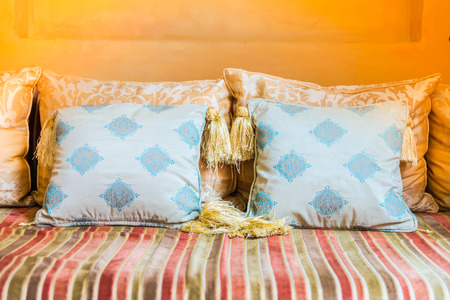Understanding the Importance of Good Sleep in Indian Lifestyle
In India, the quest for a peaceful and rejuvenating sleep is deeply rooted in both tradition and modern science. Restful sleep is not just a nightly ritual but a vital pillar of health, productivity, and overall well-being for Indian families. Ayurveda, Indias ancient science of life, highlights the significance of “Nidra” (sleep) as one of the three pillars of health, alongside diet (Ahara) and balanced living (Brahmacharya). According to Ayurvedic wisdom, quality sleep helps maintain equilibrium in the body’s doshas—Vata, Pitta, and Kapha—ensuring proper digestion, mental clarity, and emotional stability. Modern medical research echoes these insights by establishing that sound sleep supports immune strength, cognitive performance, and emotional resilience, all crucial for thriving in India’s fast-paced urban environments as well as tranquil rural settings. For many Indian households juggling work, studies, and family responsibilities, prioritising restful sleep through an optimal bed and mattress setup is essential. By understanding how both traditional Ayurvedic principles and contemporary science converge on the value of good sleep, Indian families can make informed choices for their bedrooms—creating sanctuaries that nurture health across generations.
Choosing the Right Mattress for Indian Climate
When selecting the ideal mattress for a peaceful sleep in India, it is crucial to consider the country’s unique and diverse climate zones. From the humid coasts of Kerala and Mumbai to the dry heat of Rajasthan and the chilly winters in Himachal Pradesh, each region has its own comfort needs. Choosing a mattress that adapts well to these conditions ensures restful sleep throughout the year.
Types of Mattresses Suitable for India
The Indian market offers various mattress types, each with specific benefits that cater to regional climates:
| Mattress Type | Best for Region/Climate | Key Features |
|---|---|---|
| Coir Mattress | Hot & Humid (South, Coastal Areas) | Breathable, eco-friendly, firm support, natural cooling |
| Latex Mattress | All-India (Versatile) | Temperature regulation, hypoallergenic, durable, suitable for varying climates |
| Memory Foam Mattress | Cold or Moderate (North, Hill Stations) | Body contouring, heat retention, pressure relief, good for winter months |
Why Mattress Choice Matters in India?
The right mattress can make a significant difference by aligning with local weather and sleeping habits. For example, traditional coir mattresses are popular in South India due to their cooling properties and ability to resist moisture build-up—an essential feature in humid regions. In contrast, memory foam mattresses are often preferred in colder areas like Uttarakhand or Kashmir as they retain warmth and provide plush comfort during cold nights.
Local Preferences & Recommendations
In urban metros such as Delhi, Bengaluru, or Hyderabad where air conditioning is common but climate varies seasonally, latex mattresses offer a balanced solution—they stay cool during summers and provide gentle insulation in winters. For those seeking eco-friendliness and value for money, coconut coir mattresses remain a time-tested choice rooted deeply in Indian tradition. Meanwhile, memory foam caters to modern preferences for orthopaedic support among city dwellers.
Ultimately, matching your mattress type with your region’s climatic conditions and your personal comfort needs is the first step toward setting up the best bed and mattress combination for truly peaceful sleep in India.
![]()
3. Traditional Bedding vs. Modern Setups: A Comparative View
When it comes to achieving peaceful sleep in India, the choice between traditional bedding and modern setups is an important consideration for many families. Each option has unique advantages and limitations rooted in Indias climate, lifestyle, and cultural heritage.
Traditional Bedding: Cotton Gaddas and Charpoy
Cotton gaddas and charpoys have been a part of Indian households for centuries. The cotton gadda—a thick, hand-stitched cotton mattress—offers breathability ideal for India’s warm weather. Charpoy, a woven bed frame made from natural fibres like jute or coir, provides excellent ventilation and keeps the sleeper cool during hot summers. These traditional options are valued for their affordability, ease of maintenance, and ability to adapt to different climates across regions like Rajasthan, Gujarat, and Kerala.
Benefits of Traditional Bedding
- Natural Cooling: Materials like cotton and coir help regulate temperature and prevent overheating.
- Sustainable: Locally sourced materials reduce environmental impact and support local artisans.
- Customisable: Easily adjusted or repaired to suit individual comfort preferences.
Limitations of Traditional Options
- Lack of Support: May not provide sufficient spinal alignment for those with back issues.
- Durability Concerns: Over time, cotton gaddas can flatten and charpoys may sag, reducing comfort.
- Maintenance: Require regular airing out and cleaning to avoid dust mites and allergens.
Modern Mattress Setups: Foam, Spring, and Orthopaedic Mattresses
The Indian market now offers contemporary mattresses made with memory foam, latex, springs, or orthopaedic designs. These setups cater to urban lifestyles where convenience and health concerns are priorities. Modern mattresses are engineered to provide optimal body support, pressure relief, and durability—features particularly beneficial for people suffering from joint pain or posture-related issues due to sedentary work habits.
Benefits of Modern Mattresses
- Enhanced Comfort: Advanced materials conform to the body shape for better sleep quality.
- Health Focused: Orthopaedic variants address specific health needs such as back support.
- Low Maintenance: Require less frequent cleaning and usually come with anti-allergen properties.
Limitations of Modern Setups
- Cost Factor: Significantly more expensive than traditional bedding options.
- Lesser Breathability: Some foam-based mattresses retain heat, which can be uncomfortable in hot Indian summers without air conditioning.
- Cultural Disconnect: May not evoke the same sense of tradition or local identity as classic Indian beds do.
Making an Informed Choice
The best bed and mattress setup for peaceful sleep in India depends on your unique needs—considering climate, budget, health conditions, and cultural preferences. For some, blending the charm of a charpoy with a modern mattress topper achieves both comfort and tradition; for others, investing in a high-quality orthopaedic mattress may be the key to restful nights. Ultimately, understanding these pros and cons will guide you towards a sleep solution tailored for Indian lifestyles.
4. Essential Bed Accessories for a Relaxing Sleep Environment
Creating a truly restful and peaceful sleep environment in India goes beyond just choosing the right bed and mattress. To ensure maximum comfort, hygiene, and to suit the Indian lifestyle, it is important to focus on essential bedding accessories. Each accessory plays a unique role in enhancing your nightly rest, adapting to climatic needs, and upholding traditional preferences across diverse regions of India.
Cotton Bedsheets: Breathability Meets Comfort
In the hot and humid climate that prevails in much of India, pure cotton bedsheets are indispensable. Cottons natural breathability keeps you cool during sultry summer nights and provides gentle warmth in winter. Additionally, cotton is easy to wash and maintain, making it ideal for Indian households where frequent washing is common for hygiene reasons.
Mosquito Nets: A Practical Necessity
Mosquito nets are an essential part of the Indian sleep setup, especially in areas prone to mosquitoes and other insects. Using a mosquito net not only protects you from bites and diseases like dengue and malaria but also contributes to uninterrupted sleep. Many families still prefer traditional cotton or polyester nets, which are easy to install over beds.
Pillows: Supporting Restful Sleep
The choice of pillow greatly affects sleep quality. In India, pillows filled with cotton, microfiber, or buckwheat hulls are popular due to their adaptability to head and neck support needs. For those who suffer from allergies or dust sensitivity, hypoallergenic pillow options are now widely available.
Must-Have Bedding Accessories at a Glance
| Bedding Accessory | Material/Type | Main Benefit |
|---|---|---|
| Cotton Bedsheets | Pure/Organic Cotton | Breathable, comfortable, easy maintenance |
| Mosquito Nets | Cotton/Polyester Mesh | Protects from insects, ensures uninterrupted sleep |
| Pillows | Cotton/Microfiber/Buckwheat Hulls | Provides proper support, customisable firmness |
Enhancing Hygiene & Embracing Indian Traditions
Frequent washing of bedsheets and pillow covers is an age-old practice in Indian homes to maintain cleanliness and prevent skin irritations. Moreover, many families continue the tradition of using handwoven or embroidered bedding as a symbol of heritage and comfort. By thoughtfully selecting these accessories, you not only enhance your sleep quality but also uphold values cherished in Indian culture.
5. Vastu Tips: Harmonising Your Bed Setup for Peaceful Sleep
In India, Vastu Shastra plays a significant role in shaping the way we design and arrange our bedrooms. This ancient science of architecture is believed to promote harmony, peace, and positive energy within living spaces. For those aiming to achieve a restful night’s sleep, aligning your bed and mattress setup with Vastu principles can make a noticeable difference.
Bedroom Placement According to Vastu
The location of the bedroom itself is important. Ideally, master bedrooms should be located in the southwest direction of your home. This placement is said to bring stability and prosperity to the family. For children or guest bedrooms, the northwest or west directions are recommended.
Bed Direction: Head Towards South
Vastu Shastra strongly advises that you place your bed so that your head points towards the south while sleeping. This direction is believed to align your body with the earth’s magnetic field, fostering better health, reducing stress, and ensuring deep, peaceful sleep. Avoid placing your head towards the north as it is considered inauspicious and may disturb your mental peace.
Avoid Clutter for Positive Energy
A clutter-free bedroom is essential for good Vastu and a calm mind. Keep unnecessary items out of the room and avoid storing things under the bed, as this can block the flow of positive energy (prana). Regular cleaning and minimal decoration help maintain an atmosphere conducive to relaxation and tranquility.
Additional Practical Tips
Use soothing colours such as light blue, green, or earthy tones for walls and bedsheets to create a serene environment. Place natural elements like small indoor plants in the room’s east or north corners for added freshness. Lastly, ensure that mirrors do not directly face the bed; according to Vastu beliefs, this can cause restlessness.
By embracing these Vastu tips in your bed and mattress setup, you not only respect Indian traditions but also foster an environment filled with peace, positivity, and restful sleep each night.
6. Caring for Your Bed and Mattress in Indian Homes
Ensuring the longevity and hygiene of your bed and mattress is essential for peaceful sleep, especially given the unique conditions of Indian households. With dust, humidity, and seasonal changes influencing our living environment, adopting proper care routines can make a significant difference.
Regular Maintenance: A Simple Habit
Make it a habit to air out your mattress every week by opening windows and allowing sunlight into the room. Sunlight naturally disinfects the mattress, reducing moisture and deterring dust mites—a common concern in many Indian cities. Rotate or flip your mattress once every three months to prevent uneven sagging, a practice recommended by both local vendors and international manufacturers.
Cleaning Tips for Everyday Freshness
Vacuum your mattress and bed frame regularly to remove dust, hair, and allergens. For stains, use a mild soap solution or traditional Indian remedies like a paste of baking soda and water; gently scrub with a soft cloth before letting it dry completely. Wash your bed linens weekly in hot water, especially during the summer or monsoon seasons when sweat and humidity are higher.
Seasonal Storage Practices
In many Indian homes, bedding changes with the seasons—light cottons for summer, warm quilts for winter. Store off-season bedding in breathable cotton bags or traditional trunk boxes with neem leaves or camphor balls to repel insects and preserve freshness. Before reusing stored items, air them under sunlight for a few hours to restore their natural scent and softness.
Embracing Indian Household Routines
Adapting these maintenance practices not only extends the life of your bed and mattress but also upholds traditional values of cleanliness (swachhata) that are integral to Indian homes. Involving all family members in cleaning routines fosters a sense of collective responsibility and ensures everyone enjoys restful, healthy sleep each night.


